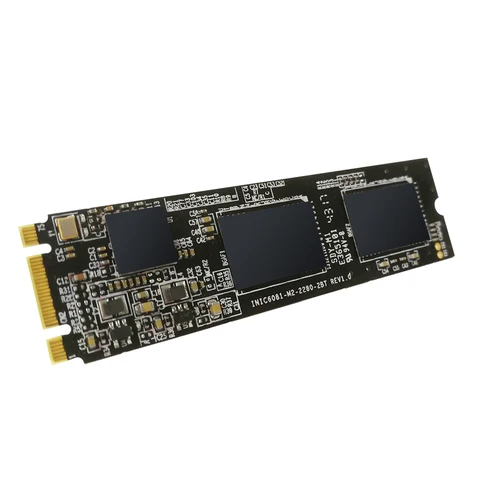
Compact M.2 SSDs deliver fast data transfer, improved boot times, and reliable performance for laptops, desktops, and embedded systems.
Form Factor: M.2 2280 (also available in 2242 / 2260 depending on model)
Interface: SATA III (6.0 Gb/s)
Compatibility: Backward compatible with SATA II (3.0 Gb/s) and SATA I (1.5 Gb/s)
Sequential Read Speed: Up to 550 MB/s
Sequential Write Speed: Up to 520 MB/s
Random Read/Write (IOPS): Up to 95,000 / 85,000 IOPS
Storage Capacity Options: 120 GB to 2 TB
Endurance (TBW): Up to 1,200 TBW (varies by model)
MTBF (Mean Time Between Failures): 1.5 to 2 million hours
Operating Temperature: 0°C to 70°C (Industrial versions: -40°C to 85°C)
Power Consumption: Extremely low (Active < 3W, Idle < 0.1W)
Controller: Advanced SATA controller with TRIM, S.M.A.R.T., and NCQ support
ECC (Error Correction Code): Yes, ensures data integrity and long-term reliability
Shock Resistance: Up to 1500G / 0.5 ms
Perfect for system upgrades: Boosts existing SATA-based systems without needing new NVMe hardware.
Ideal for compact builds: The thin, cable-free design fits easily into laptops, mini PCs, and servers.
Stable and reliable: Enterprise-grade NAND flash ensures data safety under continuous workloads.
Energy-efficient: Reduces operational costs in high-density deployments.
Cost-effective transition: Offers SSD drive performance at a lower price compared to NVMe solutions.
1. Does B450 support M.2 NVMe SSD?
Yes, most B450 motherboards support M.2 NVMe SSDs through a PCIe 3.0 x4 slot. However, it’s best to check your specific motherboard’s manual Some B450 boards have one NVMe slot, and others may support only SATA-based M.2 drives on secondary slots.
2. How to format an M.2 SSD in Windows 11?
To format an M.2 SSD in Windows 11, open Disk Management → locate your SSD → right-click on it → select "Format" → Choose your file system (NTFS or exFAT) and confirm.
Note: If the SSD is new, you may need to initialize it first before formatting.
3. Can I use an M.2 SSD as a boot drive?
Yes, M.2 SSDs especially NVMe models, can be used as boot drives. Just make sure your motherboard BIOS supports NVMe booting and that the drive is properly set as the primary boot device.
4. What’s the difference between M.2 SATA and M.2 NVMe SSDs?
Both use the M.2 form factor, but M.2 SATA SSDs use the SATA interface (slower, up to 550 MB/s), while M.2 NVMe SSDs use the PCIe interface (much faster, up to 7000 MB/s).
If speed is a priority, especially for gaming, rendering, or data-heavy workloads, NVMe is the better choice.

Subscribe for deals, new products and promotions
